TIME and Dan Neil, a Pulitzer Prize-winning automotive critic, look at the greatest lemons of the automotive industry.
Horsey Horseless (1899)
Somewhere between an early car and the head-in-the-bed scene in The Godfather, the Horsey Horseless, the brainfart of inventor Uriah Smith of Battle Creek, Mich., was intended to soothe the skittish nerves of our equine servants. A wooden horse head was attached to the front of the chuffing buggy in order to make it resemble a horse and carriage (Smith recommended the horse head be hollow to contain volatile fuel — another great idea). “The live horse would be thinking of another horse,” said Smith, “and before he could discover his error and see that he had been fooled, the strange carriage would be passed.” Stupid horse! It’s not clear if the Horsey Horseless was ever actually built or if it is a chimera of auto history, but it reminds us just what a radical, hard-to-conceptualize thing a horseless carriage was.
Ford Model T (1909)
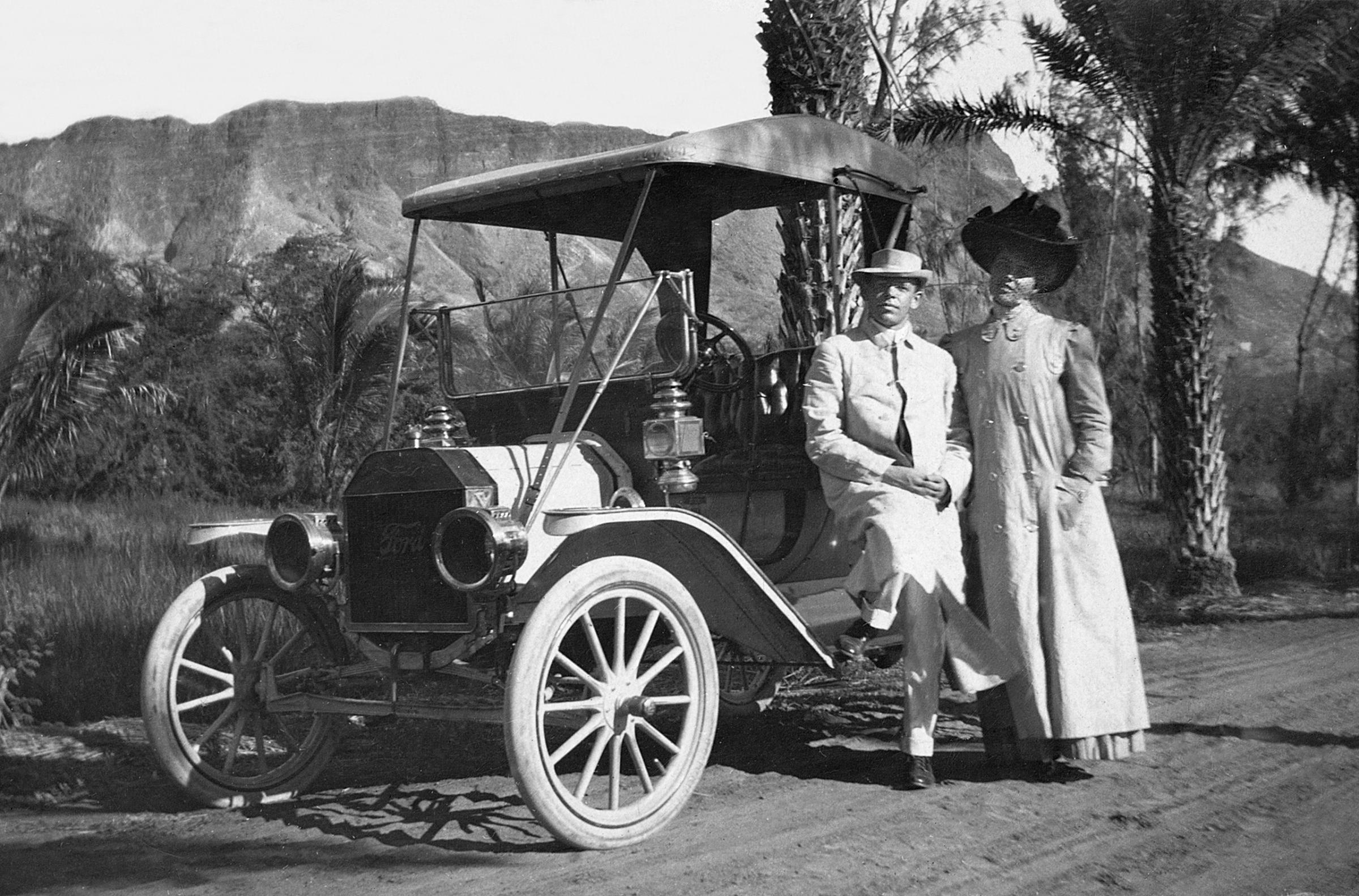
Uh-oh. Here comes trouble. Let’s stipulate that the Model T did everything that the history books say: It put America on wheels, supercharged the nation’s economy and transformed the landscape in ways unimagined when the first Tin Lizzy rolled out of the factory. Well, that’s just the problem, isn’t it? The Model T — whose mass production technique was the work of engineer William C. Klann, who had visited a slaughterhouse’s “disassembly line” — conferred to Americans the notion of automobility as something akin to natural law, a right endowed by our Creator. A century later, the consequences of putting every living soul on gas-powered wheels are piling up, from the air over our cities to the sand under our soldiers’ boots. And by the way, with its blacksmithed body panels and crude instruments, the Model T was a piece of junk, the Yugo of its day.
Overland OctoAuto (1911)
Milton Reeves had a very hard head and, apparently, very poor eyesight. While the general conformation of the automobile was largely sorted out in the first decade of the 20th century — particularly that business about four wheels — Reeves thought perhaps eight or a minimum of six wheels might provide a smoother ride. Welding in some bits to a 1910 Overland and adding two more axles and four more guncart-style wheels, Reeves created the OctoAuto, proudly displaying it at the inaugural Indianapolis 500. Like its Marvel Comics-worthy name, the car was a bit of a monster, measuring over 20 ft. long. Talk about scaring the horses. Zero orders for the patently ugly and silly OctoAuto apparently didn’t discourage Reeves, who tried again the next year with the Sextauto (six wheels, single front axle design). Reeves is remembered today as the inventor of the muffler, which is far from ignominy.
Scripps-Booth Bi-Autogo (1913)
A 3,200-lb. motorcycle with training wheels, a V8 engine and enough copper tubing to provide every hillbilly in the Ozarks with a still, the Scripps-Booth Bi-Autogo was the daft experiment of James Scripps-Booth, an heir of the Scripps publishing fortune and a self-taught — or untaught — auto engineer. The Bi-Autogo was essentially a two-wheeled vehicle, carrying its considerable heft on 37-in. wooden wheels. At slow speeds, the driver could lower small wheels on outriggers to stabilize the vehicle so it wouldn’t plop over. This is not a case of the advantage of hindsight; this was obviously a crazy idea, even in 1913. The Bi-Autogo does enjoy the historical distinction of being the first V8-powered vehicle ever built in Detroit, so you could argue it is the beginning of an even greater folly.
Briggs and Stratton Flyer (1920)
By 1920, the automotive was no longer a primitive experiment. Companies such as Rolls-Royce, Cadillac, Hispano-Suiza and Voisin were making potent and luxurious automobiles, the technical achievements of the age. And then there was this, the Flyer, which is no more than a motorized park bench on bicycle wheels. No suspension, no bodywork, no windshield. It was actually a five wheeler, with the dinky 2-hp Briggs and Stratton engine driving a traction wheel on the back, like a boat’s outboard motor. The Flyer represents something we’ll see several times on this list: The drive to make the absolute cheapest, most minimal automobile possible.
Fuller Dymaxion (1933)
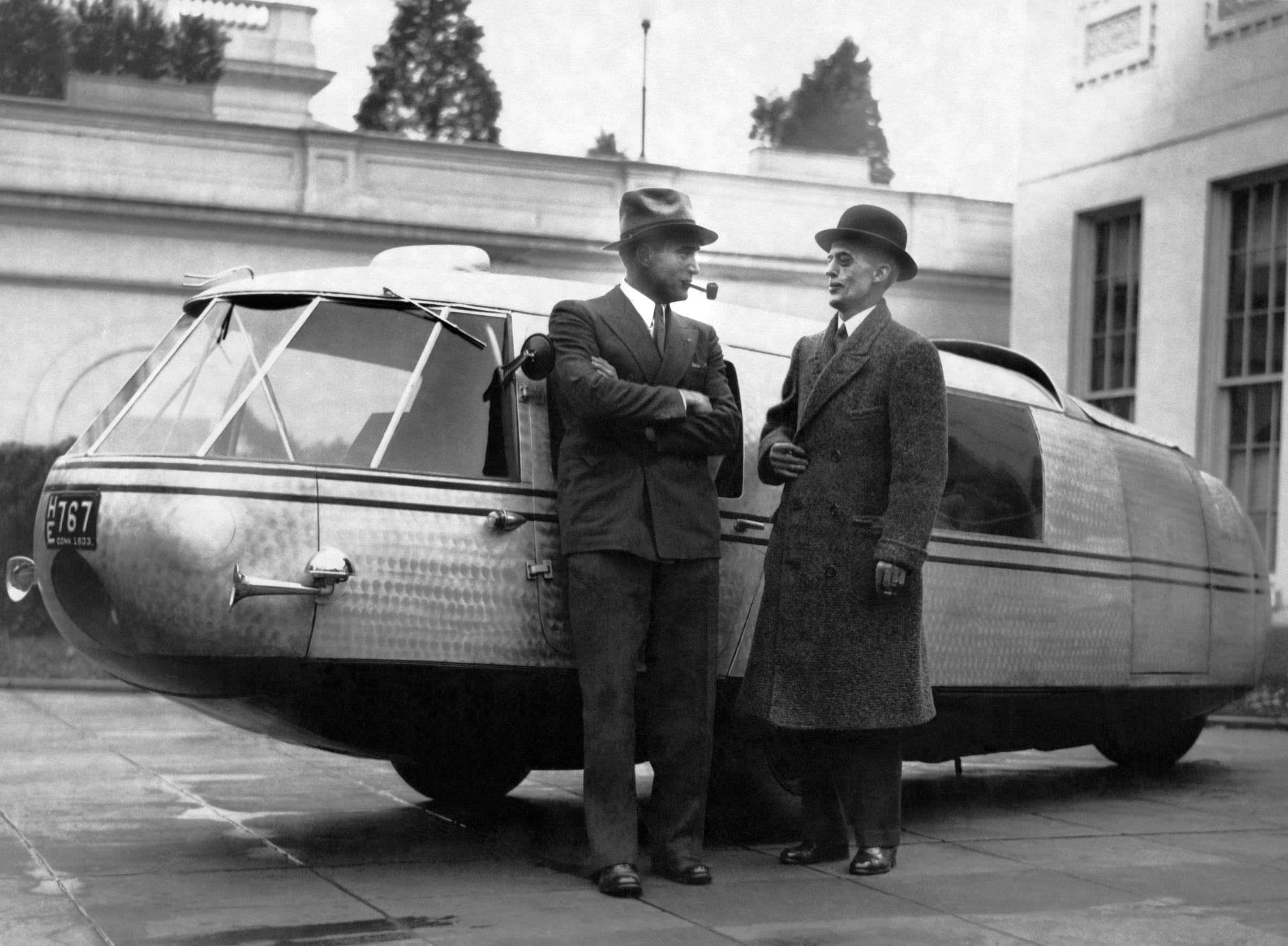
Designer-genius R. Buckminster Fuller was one of the century’s great nutjobs, a walking unorthodoxy who originally conceived of the Dymaxion as a flying automobile, or drivable plane, with jet engines and inflatable wings. It would be one link in his vaguely totalitarian plan for the people to live in mass-produced houses deposited on the landscape by dirigibles. Okayyyy…Deprived of wings, the Dymaxion was a three-wheel, ground-bound zeppelin, with a huge levered A-arm carrying the rear wheel, which swiveled like the tail wheel of an airplane. The first prototype had a wicked death wobble in the rear wheel. The next two Dymaxions were bigger, heavier, and only marginally more drivable. The third car had a stabilizer fin on top, which did nothing to cure the Dymaxion’s acute instability in crosswinds. A fatal accident involving the car — cause unknown — doomed its public acceptance. Though unworkable, this three-wheeled suppository was the boldest of a series of futuristic, rear-engined cars of the 1930s, including the Tatra, the Highway Aircraft Corporation’s “Fascination” car and, everybody’s favorite, the Nazi’s KdF-wagen.
Chrysler/Desoto Airflow (1934)
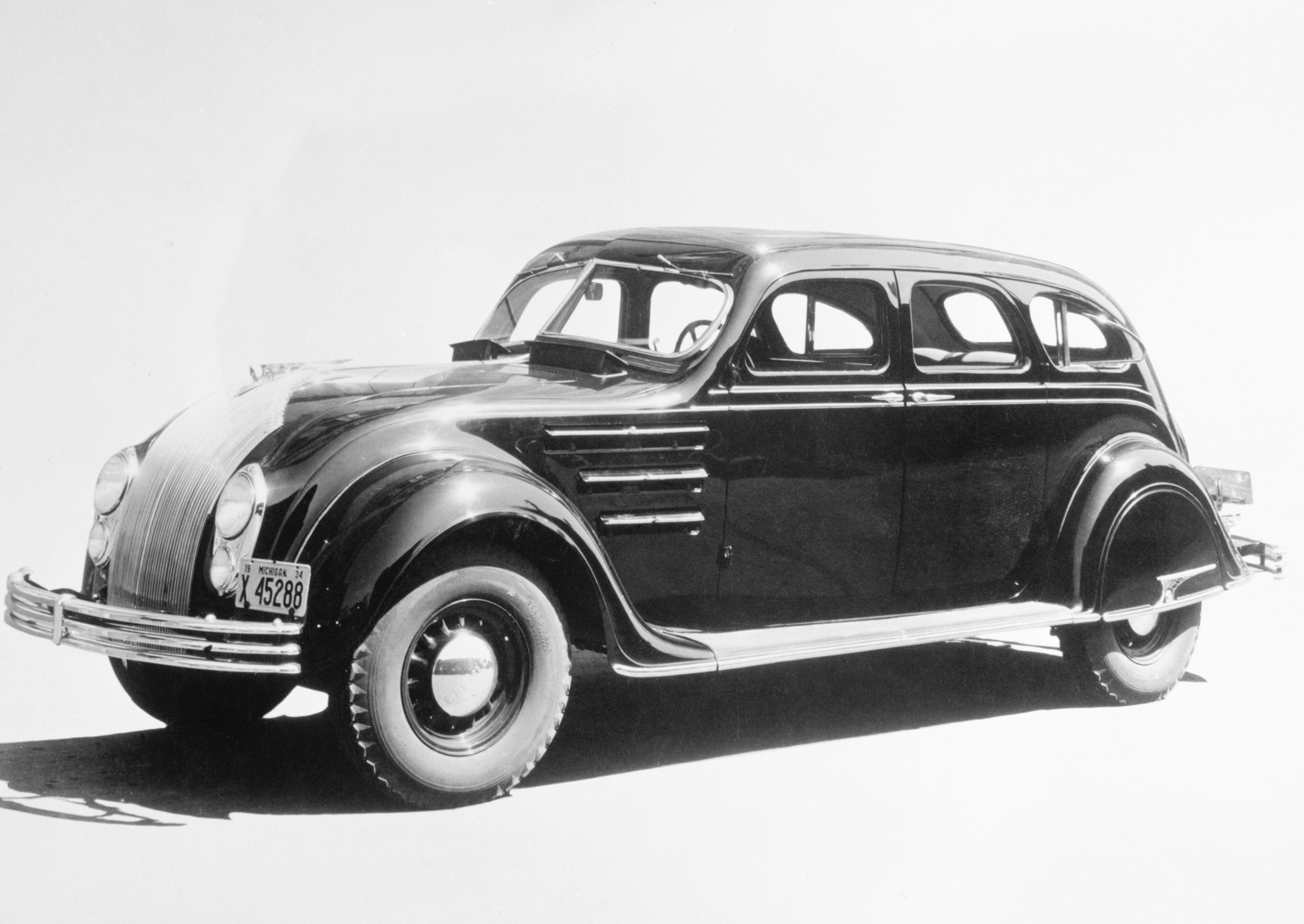
The Airflow’s “worst”-ness derives from its spectacularly bad timing. Twenty years later, the car’s many design and engineering innovations — the aerodynamic singlet-style fuselage, steel-spaceframe construction, near 50-50 front-rear weight distribution and light weight — would have been celebrated. As it was, in 1934, the car’s dramatic streamliner styling antagonized Americans on some deep level, almost as if it were designed by Bolsheviks. It didn’t help that a few early Airflows had major, engine-falling-out-type problems that stemmed from the radical construction techniques required. Chrysler, and the even more hapless Desoto, tried to devolve the Airflow stylistically, giving it more conventional grill and raising the trunk into a kind of bustle (some later models were named Airstream), but the damage was done. Sales were abysmal. It wouldn’t be the last time American car buyers looked at the future and said, “no thanks.”
Crosley Hotshot (1949)
The first sports car produced in postwar America was a major hunk of junk. Actually, at 1,100 lbs and 145 in. long, the Crosley Hotshot was a minor hunk of junk, but at least it was slow and dangerous. A wondrously mangled and compacted Hotshot can be glimpsed in the 1961 driver’s ed scare film Mechanized Death. The Hotshot was the work of consumer products pioneer Powel Crosley Jr., of Cincinnati, he of Crosley radio fame. But what he really wanted to do was build cars, which he did with middling failure until the doors closed in 1952. A Hotshot actually won the “index of performance” — an honor for the best speed for its displacement — at the 1950 Six Hours of Sebring, puttering around at an average of 52 mph. What killed the Hotshot was its engine, a dual-overhead cam .75-liter four cylinder, not cast in iron but brazed together from pieces of stamped tin. When these brazed welds let go, as they often did, things quickly got noisy, and hot.
Renault Dauphine (1956)
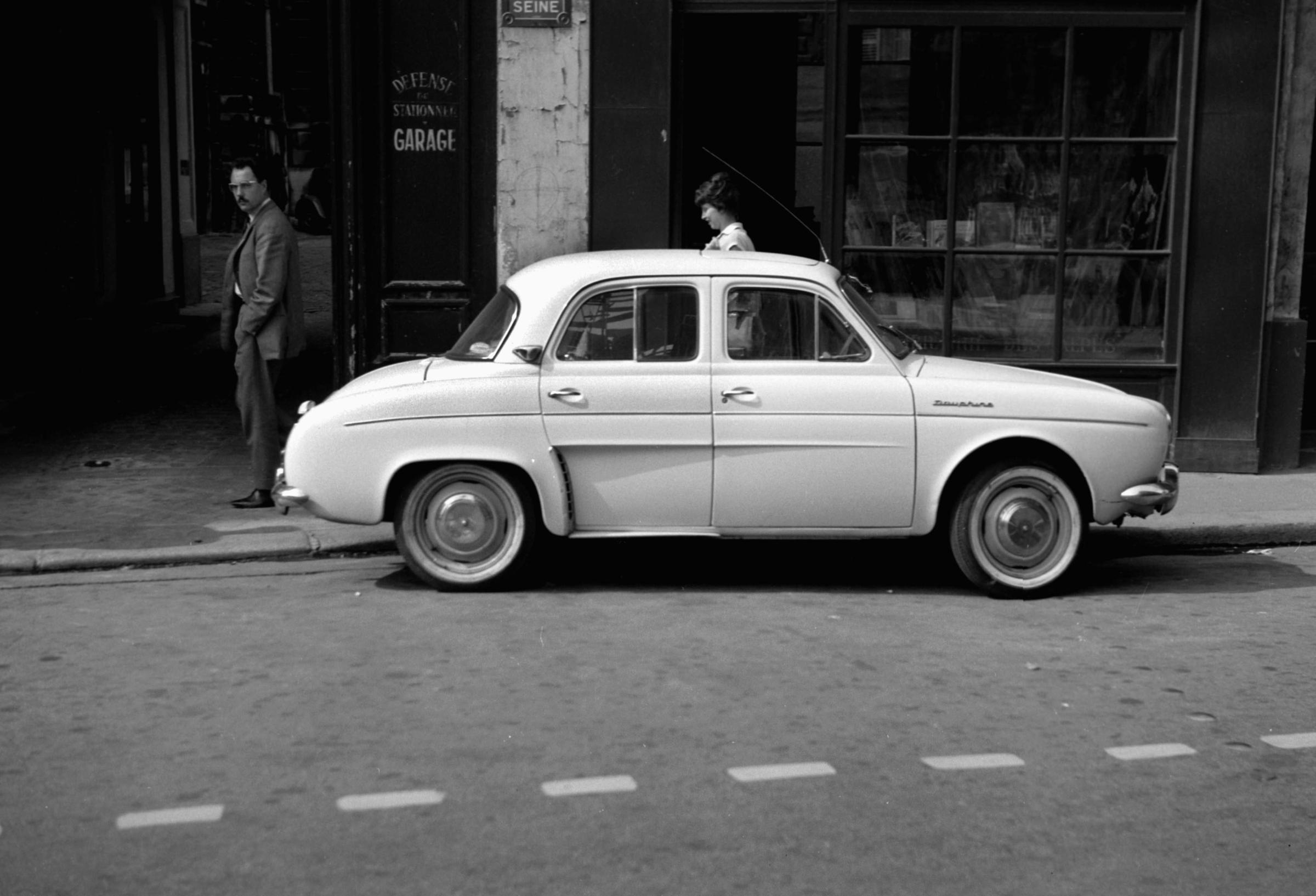
The most ineffective bit of French engineering since the Maginot Line, the Renault Dauphine was originally to be named the Corvette, tres ironie. It was, in fact, a rickety, paper-thin scandal of a car that, if you stood beside it, you could actually hear rusting. Its most salient feature was its slowness, a rate of acceleration you could measure with a calendar. It took the drivers at Road and Track 32 seconds to reach 60 mph, which would put the Dauphine at a severe disadvantage in any drag race involving farm equipment. The fact that the ultra-cheap, super-sketchy Dauphine sold over 2 million copies around the world is an index of how desperately people wanted cars. Any cars.
King Midget Model III (1957)
The King Midget story reminds us what a middle-class nation the U.S. was in the ’50s. Claud Dry and Dale Orcutt, of Athens, Ohio, buddies from the Civil Air Patrol, wanted to sell bare-boned utility car that anybody could afford, unlike that bloody elitist peacenik Henry Ford with his fancy Model T. King Midget’s cars made the Model T look like a Bugatti Royale. In the late 1940s, they began offering the single-seat Model I as a home-built, $500 kit, containing the frame, axles and sheetmetal patterns, so that the body panels could be fabricated by local tradesmen. Any single-cylinder engine would power it. The result was a truly crap-tastic little vehicle, the four-wheel equivalent to those Briggs-and-Stratton powered minibikes. Amazingly, Midget Motors continued to develop and sell mini-cars until the late 1960s. The crown jewel was the Model III, introduced in 1957, a little folded-steel crackerbox powered by a 9-hp motor. Government safety standards, at long last, put the King Midget out of our misery.
Waterman Aerobile (1957)
Waldo Waterman wanted aviation pioneer Glenn Curtiss to like him in the worst way. Inspired by what was apparently Curtiss’ casual remark about driving an airplane away from the field, Waterman spent years developing a roadable airplane. In 1934, he flew his first successful prototype, the “Arrowplane,” a high-wing monoplane with tricycle wheels. On the ground, the wings folding against the fuselage like those of a fly (now would be a good time to note that Waterman must have been crazy to get airborne in such a contraption). Nonetheless, the Arrowplane goes down as the first real flying car. Two decades later, Waterman finally perfected, if that’s the word, what he then called the Aerobile, configured as a swept-wing “pusher” (prop in the back). There were few customers with so consummate a death wish as to order their own Aerobile, and Waterman’s one working car-plane eventually wound up in the Smithsonian, where it can’t kill anyone.
Ford Edsel (1958)
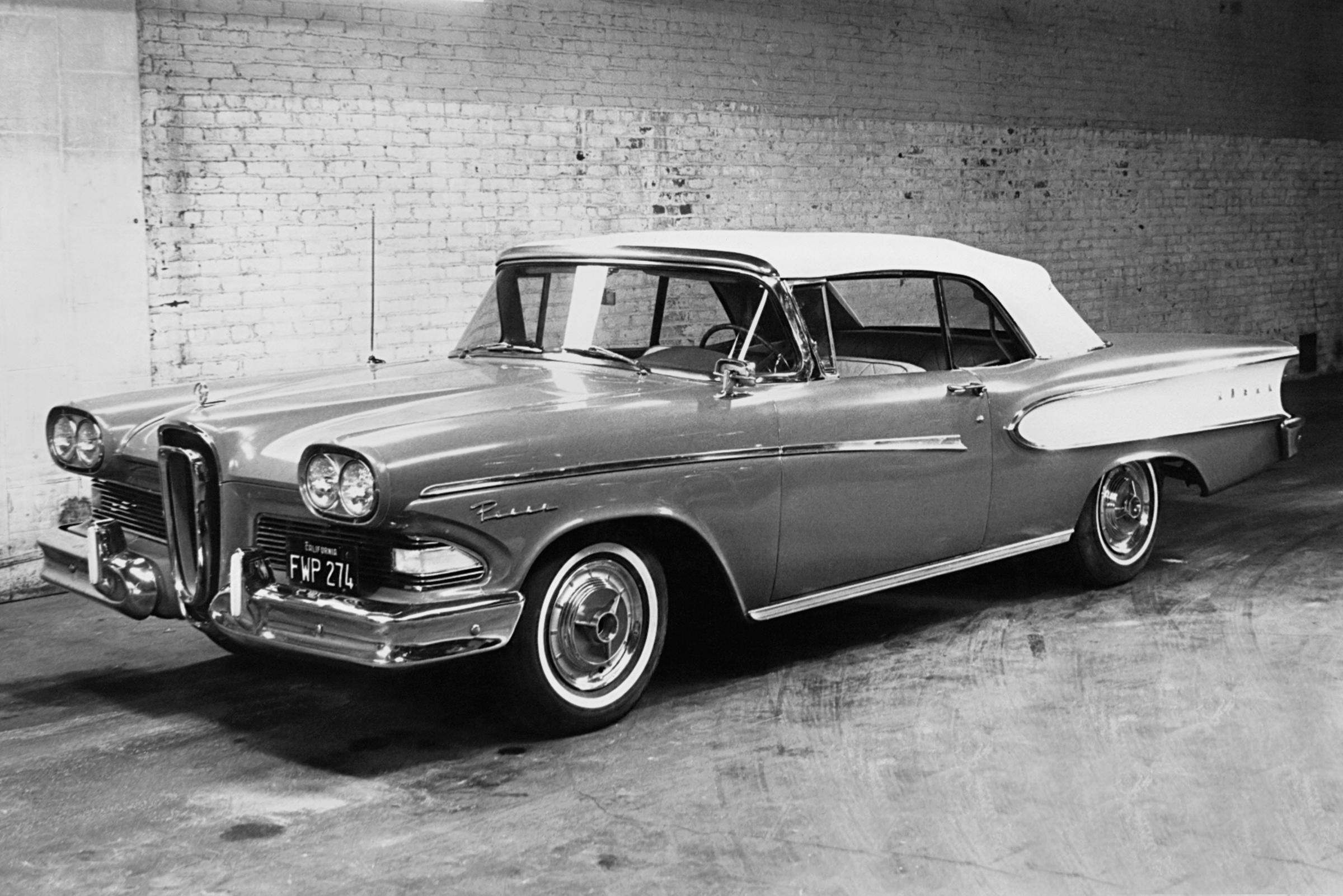
That’s why we’re all here, right? To celebrate E Day, the date 50 years ago when Ford took one of the autodom’s most hilarious pratfalls. But why? It really wasn’t that bad a car. True, the car was kind of homely, fuel thirsty and too expensive, particularly at the outset of the late ’50s recession. But what else? It was the first victim of Madison Avenue hyper-hype. Ford’s marketing mavens had led the public to expect some plutonium-powered, pancake-making wondercar; what they got was a Mercury. Cultural critics speculated that the car was a flop because the vertical grill looked like a vagina. Maybe. America in the ’50s was certainly phobic about the female business. How did the Edsel come to be synonymous with failure? All of the above, consolidated into an irrational groupthink and pressurized by a joyously catty media. Interestingly, it was Ford President Robert McNamara who convinced the board to bail out of the Edsel project; a decade later, it was McNamara, then Secretary of Defense, who couldn’t bring himself to quit the disaster of Vietnam, even though he knew a lemon when he saw one.
Lotus Elite (1958)

Fiberglass was the ’50s carbon fiber — tough, versatile, lighter than steel and more affordable than aluminum. The Kaiser Darrin and Corvette sports cars were wrapped in fiberglass bodies, for instance. Colin Chapman, the founding engineer of Lotus, was bonkers for weight savings. It was inevitable that he would be drawn to the material. And so, the Elite. Weighing just 1,100 lbs and powered by a punchy, 75-hp Coventry Climax engine, the Elite (Type 14) was a successful race car, winning its class at the 24 Hours of Le Mans six times. It was also a lovely little coupe, which made the moment when the suspension mounts punched through the stressed-skin monocoque all the more pathetic. The unreinforced fiberglass couldn’t take the structural strain. In Chapman’s cars, failure was always an option.
MGA Twin Cam (1958)
A point of personal privilege. I own a 1960 MGA that I restored with my own two hands, and it is a fantastic British sports car, with lovely lines penned by Syd Enever, a stiff chassis, and a floggable character. The car was introduced in 1955 as a replacement to the venerable TD and was itself replaced by the MGB in 1962. Along the way, somebody decided my little car was anemic — hey! I resent that! — so MG offered an optional high-performance engine with dual overhead cams, thus the “twin cam.” It was a leaking, piston-burning, plug-fouling nightmare of a motor that required absolute devotion to things like ignition timing, fuel octane and rpm limits, less the whole shebang vomit connecting rods and oil all over the road. Many years after the engine was taken out of service, it was discovered that the problem lay in the carburetors. At certain rpm, resonant frequencies would cause the fuel mixture to froth, leaning out the fuel and burning the pistons. I’ve never had any such trouble with my iron-block, pushrod, lawn tractor engine. I’m just saying.
Zunndapp Janus (1958)
Built in Nuremberg, Germany, by the well-established motorcycle firm during a downturn in the two-wheeler market, this push-me-pull-you was based on a Dornier prototype and powered by a 250-cc, 14-horsepower engine, giving it a top speed of only 50 mph, assuming you had that kind of time. Its unique feature was the rear-facing bench seat, which meant passengers could watch in horror as traffic threatened to rear-end this rolling roadblock of a car. Soon it became clear — “Ach Du Lieber!” — that the Janus was a disaster, coming or going.
Amphicar (1961)

A vehicle that promised to revolutionize drowning, the Amphicar was the peacetime descendant of the Nazi Schwimmwagen (say it out loud — it’s fun!). The standard line is that the Amphicar was both a lousy car and a lousy boat, but it certainly had its merits. It was reasonably agile on land, considering, and fairly maneuverable on water, if painfully slow, with a top speed of 7 mph. Its single greatest demerit — and this is a big one — was that it wasn’t particularly watertight. Its flotation was entirely dependent on whether the bilge pump could keep up with the leakage. If not, the Amphicar became the world’s most aerodynamic anchor. Even so, a large number of the nearly 4,000 cars built between 1961 and 1968 are still on the road/water. In fact, during the recent floods in Britain, an Amphicar enthusiast served as a water taxi, bringing water and groceries to a group of stranded schoolkids. Bully!
Corvair (1961)
Rear-engine cars are fun to drive and even more fun to crash. While rear-engine packaging offers enormous advantages, putting the vehicle’s heaviest component behind the rear axle gives cars a distinct tendency to spin out, sort of like an arrow weighted at the end. During World War II, Nazi officers in occupied Czechoslovakia were banned from driving the speedy rear-engined Tatras because so many had been killed behind the wheel. Chevrolet execs knew the Corvair — a lithe and lovely car with an air-cooled, flat-six in the back, a la the VW Beetle — was a handful, but they declined to spend the few dollars per car to make the swing-axle rear suspension more manageable. Ohhh, they came to regret that. Ralph Nader put the smackdown on GM in his book Unsafe at Any Speed, also noting that the Corvair’s single-piece steering column could impale the driver in a front collision. Ouch! Meanwhile, the Corvair had other problems. It leaked oil like a derelict tanker. Its heating system tended to pump noxious fumes into the cabin. It was offered for a while with a gasoline-burner heater located in the front “trunk,” a common but dangerously dumb accessory at the time. Even so, my family had a Corvair, white with red interior, and we loved it.
Peel Trident (1966)
Less a car than a 5th-grade science project on seed germination, the Peel Trident was designed and built on the Isle of Man in the 1960s for reasons as yet undetermined, kind of like Stonehenge. The Trident was the evolution of the P-50, which at 4-ft., 2-in. in length could justify its claim as the world’s smallest car, or fastest barstool. The Trident is a good example of why all those futuristic bubbletop cars of GM’s Motorama period would never work: The sun would cook you alive under the Plexiglas. We in the car business call the phenomenon “solar gain.” You have to love the heroic name: Trident! More like Doofus on the half-shell.
AMC Gremlin (1970)

American Motors designer Richard Teague — remember that name — was responsible for some of the coolest cars of the era. The Gremlin wasn’t one of them. AMC was profoundly in the weeds at the time, and the Gremlin was the company’s attempt to beat Ford and GM to the subcompact punch. To save time and money, Teague’s design team basically whacked off the rear of the AMC Hornet with a cleaver. The result was one of the most curiously proportioned cars ever, with a long low snout, long front overhang and a truncated tail, like the tail snapped off a salamander. Cheap and incredibly deprived — with vacuum-operated windshield wipers, no less — the Gremlin was also awful to drive, with a heavy six-cylinder motor and choppy, unhappy handling due to the loss of suspension travel in the back. The Gremlin was quicker than other subcompacts but, alas, that only meant you heard the jeers and laughter that much sooner.
Triumph Stag (1970)
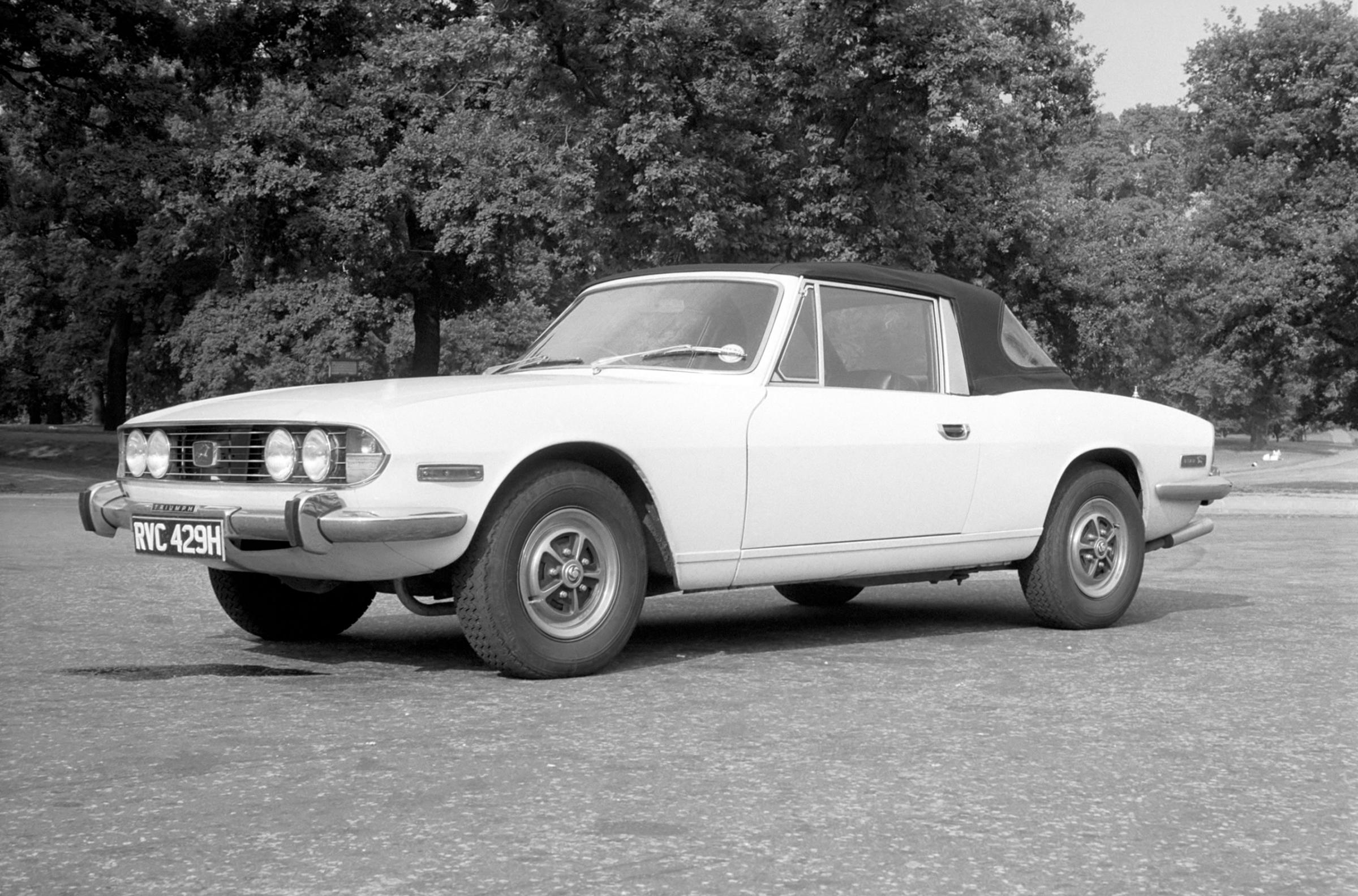
You could put all the names of all the British Leyland cars of the late ’60s in a hat and you’d be guaranteed to pull out a despicable, rotten-to-the-core mockery of a car. So consider the Triumph Stag merely representative. Like its classmates, it had great style (penned by Giovanni Michelotti) ruined by some half-hearted, half-witted, utterly temporized engineering: To give the body structure greater stiffness, a T-bar connected the roll hoop to the windscreen, and the windows were framed in eye-catching chrome. The effect was to put the driver in a shiny aquarium. The Stag was lively and fun to drive, as long as it ran. The 3.0-liter Triumph V8 was a monumental failure, an engine that utterly refused to confine its combustion to the internal side. The timing chains broke, the aluminum heads warped like mad, the main bearings would seize and the water pump would poop the bed — ka-POW! Oh, that piston through the bonnet, that is a spot of bother. We’ll not hear the last of Triumph on this list.
Chrysler Imperial LeBaron Two-Door Hardtop (1971)
The glamorous Imperial marque was, by the late ’60s, reduced to a trashy, pseudo-luxury harlot walking the streets for its pimp, the Chrysler Corporation. By 1971, only the Imperial LeBaron was left and it shared the monstrous slab-sided “fuselage” styling of corporate siblings like the Chrysler New Yorker and the Dodge Monaco. Appearing to have been hewn from solid blocks of mediocrity, the Imperial LeBaron two-door is memorable for having some of the longest fenders in history. It was powered by Chrysler’s silly-big 440-cu.-in. V8 and measured over 19 ft. long. The interior looked like a third-world casino. Here we are approaching the nadir of American car building — obese, under-engineered, horribly ugly. Or, it would be the nadir, except for the abysmal 1980 Chrysler Imperial, which had an engine cursed by God. The Imperial name was finally overthrown in 1983.
Ford Pinto (1971)
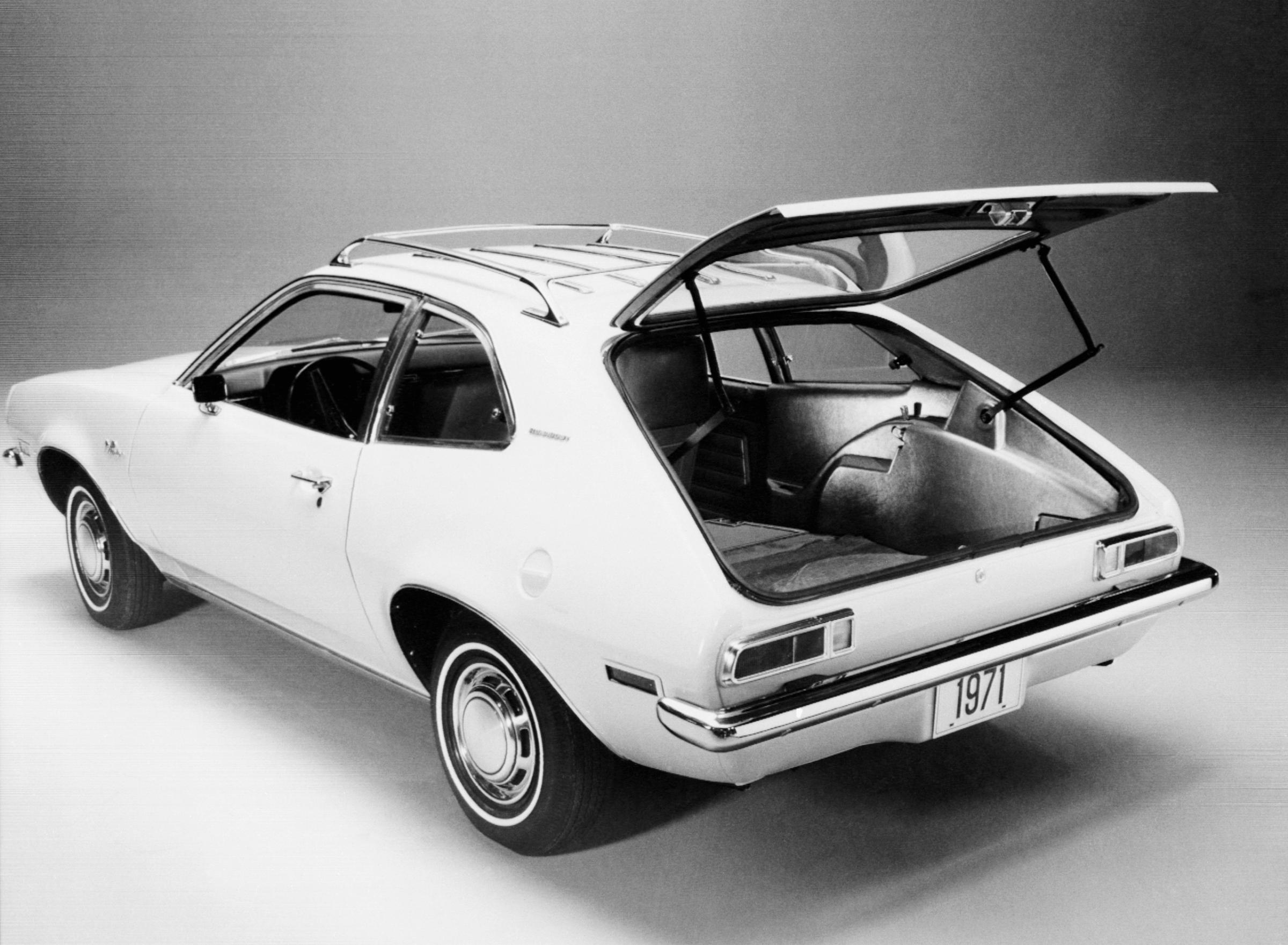
They shoot horses, don’t they? Well, this is fish in a barrel. Of course the Pinto goes on the Worst list, but not because it was a particularly bad car — not particularly — but because it had a rather volatile nature. The car tended to erupt in flame in rear-end collisions. The Pinto is at the end of one of autodom’s most notorious paper trails, the Ford Pinto memo , which ruthlessly calculates the cost of reinforcing the rear end ($121 million) versus the potential payout to victims ($50 million). Conclusion? Let ’em burn.
Jaguar XK-E V12 Series III (1974)
The 1961 Jaguar E-Type was heavenly, a dead-sexy, 150-mph supercar, a stiletto heel to the heart of any car-loving man. By 1974, it had morphed into this, this thing. In order to compensate for power-sapping emissions controls required in the U.S., the car’s primary export market, Jaguar discontinued the reliable 4.2-liter six for an anchor-heavy 5.3-liter V12, which was a total bitch to try to keep in tune and made the car nose-heavy besides. Jaguar also discontinued the elegant fixed-head coupe and offered the car only as a long wheelbase 2+2 or convertible. Imagine taking one of the world’s most beautiful cars and sticking it in a taffy puller. Not finished ruining the lines, Jag plumped up the fenders, spoiling the smooth, aero-sleek contours of the original. The piece de resistance, Jag affixed hideous rubber bumpers — Dagmars, really — in a lame attempt to meet 5-mph bumper standards. To which car enthusiasts can only say, “You bastards!”
Bricklin SV1 (1975)
The only Bricklin I ever sat in caught on fire and burned to the axles. This is notably ironic, since the car’s creator — the smooth-talking Malcolm Bricklin — didn’t include an ashtray or lighter in the car, to discourage smoking. Despite its hand-removing, 100-lb. gullwing doors, the SV1 was supposed to exemplify the safer car of the future; the name stands for “Safety Vehicle 1.” The bodies were made of brightly colored, dent-resistant plastic, like PlaySkool furniture. Another safety feature: incredible, crust-of-the-Earth-cooling slowness. All those resin panels and compressible bumpers added hundreds of pounds that the emissions-limited V8s couldn’t handle. This thing couldn’t outrun the Rose Bowl Parade. Less than 3,000 of the wedgy coupes were built, but Malcolm Bricklin was far from through, as we’ll see.
Morgan Plus 8 Propane (1975)
The venerable, and I do mean venerable, Morgan Motor Company of Malvern, Warwickshire, has been making cars the old fashioned way since it was radical and high-tech. With wing fenders, wooden-frame bodies, and sliding-pillar front suspensions, Morgans are mailed to us direct from 1935. But in the early 1970s, new U.S. emissions and safety requirements caused Morgan to pull out of the market. To the rescue came Bill Fink, a San Francisco Moggie-phile and dealer who managed to get the car certified by running its Buick/Rover V8 on propane. For years, small numbers of these bouncy little roadsters had tanks of liquid propane hung perilously behind the rear bumper. And people gave the Pinto grief?
Triumph TR7 (1975)
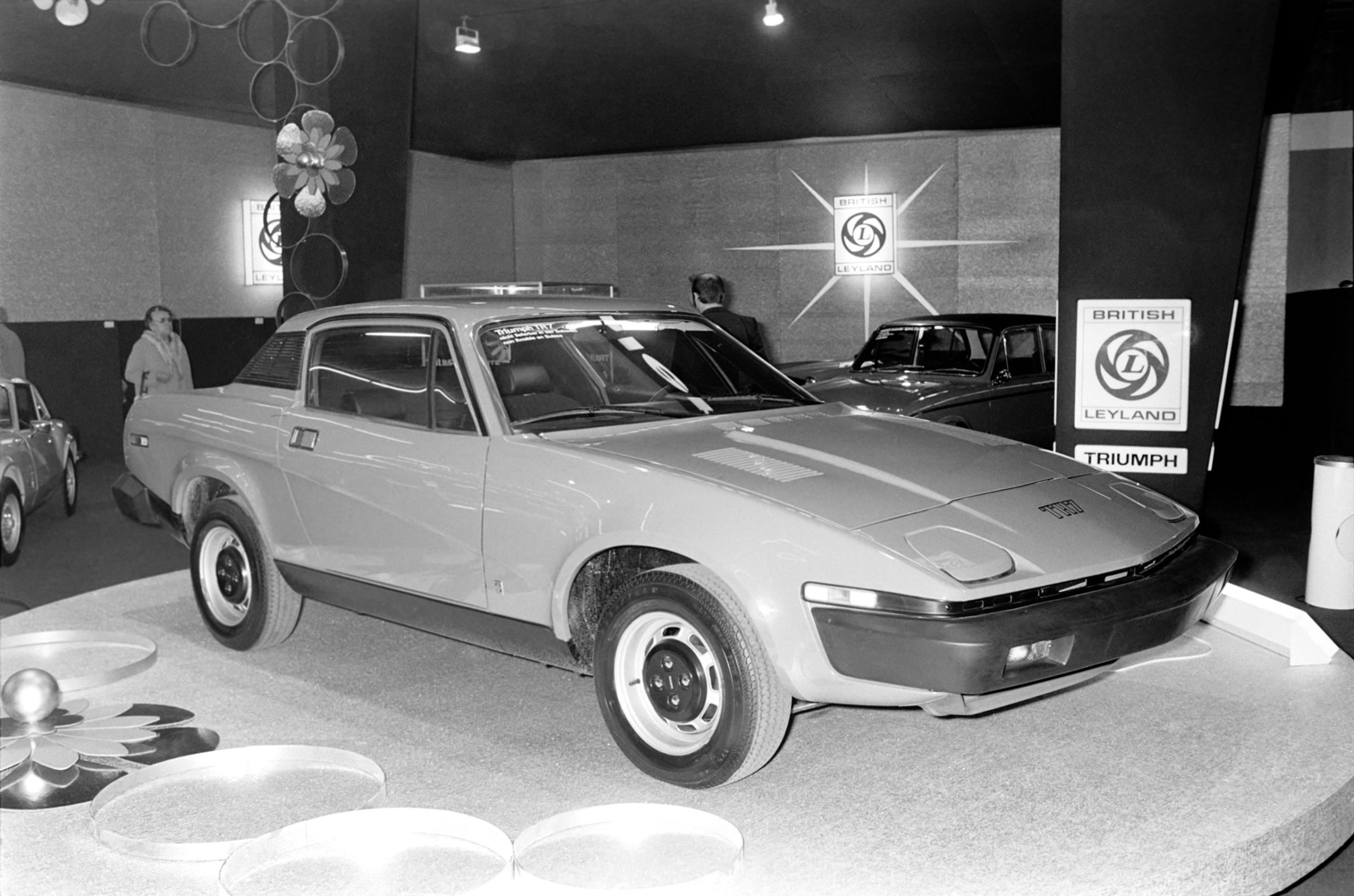
“The shape of things to come” quickly became the shape that came and went, in a great cloud of “good riddance.” The doorstop-shaped TR7, and its rare V8-powered sibling TR8, were the last Triumphs sold in America and among the last the company made before it folded its tents in 1984. The trouble was not necessarily the engineering, or even the peculiar design, which looked fit to split firewood. It was that the cars were so horribly made. The thing had more short-circuits than a mixing board with a bong spilled on it. The carburetors had to be constantly romanced to stay in balance. Timing chains snapped. Oil and water pumps refused to pump, only suck. The sunroof leaked and the concealable headlights refused to open their peepers. One owner reports that the rear axle fell out. How does that happen? It was as if British Leyland’s workers were trying to sabotage the country’s balance of trade. Oh yeah.
Trabant (1975)
This is the car that gave Communism a bad name. Powered by a two-stroke pollution generator that maxed out at an ear-splitting 18 hp, the Trabant was a hollow lie of a car constructed of recycled worthlessness (actually, the body was made of a fiberglass-like Duroplast, reinforced with recycled fibers like cotton and wood). A virtual antique when it was designed in the 1950s, the Trabant was East Germany’s answer to the VW Beetle — a “people’s car,” as if the people didn’t have enough to worry about. Trabants smoked like an Iraqi oil fire, when they ran at all, and often lacked even the most basic of amenities, like brake lights or turn signals. But history has been kind to the Trabi. Thousands of East Germans drove their Trabants over the border when the Wall fell, which made it a kind of automotive liberator. Once across the border, the none-too-sentimental Ostdeutschlanders immediately abandoned their cars. Ich bin Junk!
Aston Martin Lagonda (1976)
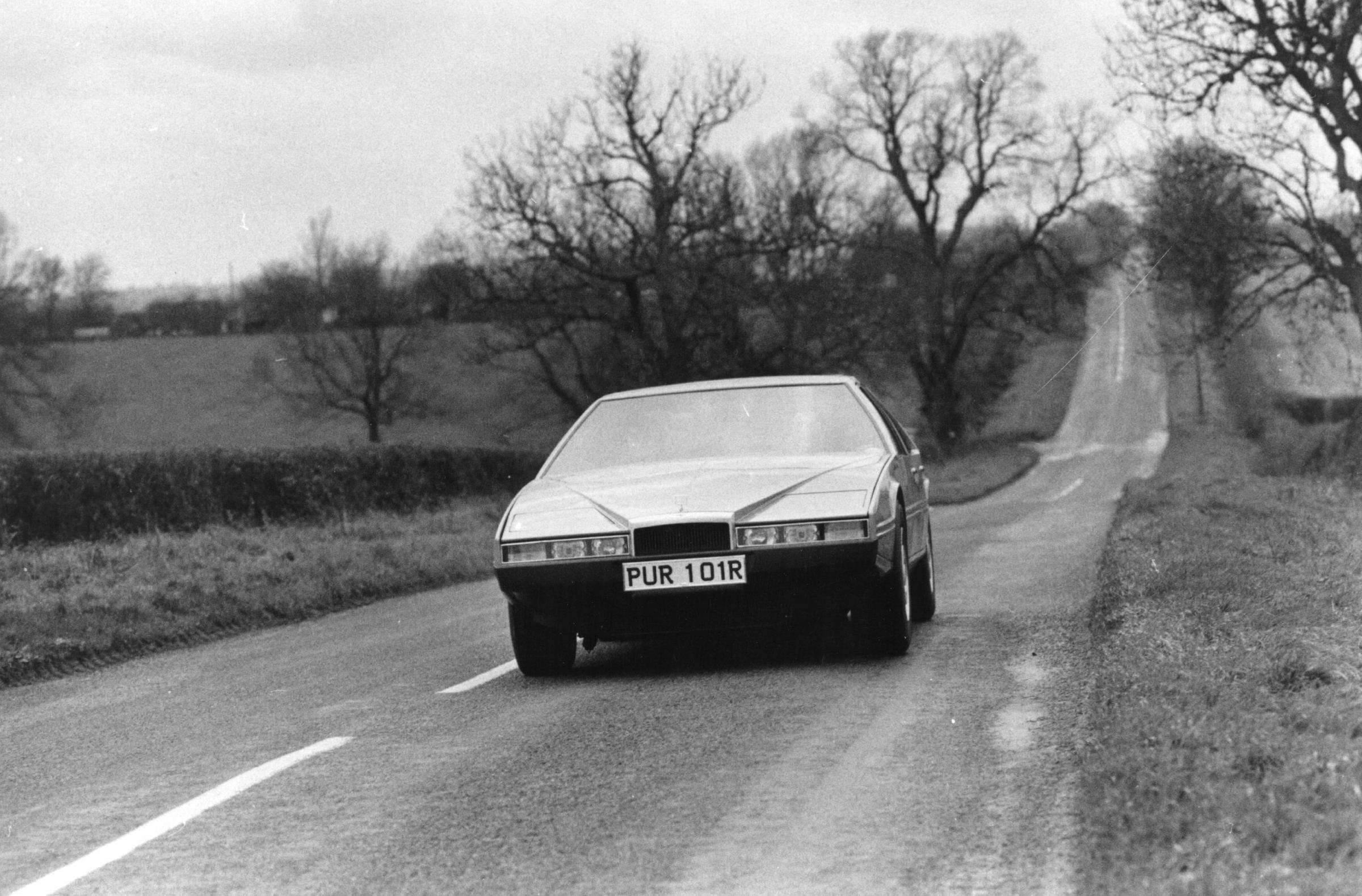
In the disco days of the 1970s, even supercars were cocaine-thin. Meet the Aston Martin Lagonda, a four-door exotic that lived on dinner mints and hot water. Designed by AM penman William Towns — undoubtedly wearing a very large cravat at the time — the Lagonda was as beautiful a car as ever resembled a pencil box. Mechanically, it was a catastrophe, Aston Martin’s Dunkirk. The company decided to build the Lagonda with a brace of cutting-edge, computer-driven electronics and cathode-ray displays, which would have been very impressive if any of them ever worked. NASA couldn’t have built this car, much less the heirs to Joseph Lucas, the British electronics’ famous “Prince of Darkness.” Still, I’d kill to have one of these cars, and the O-scope and multi-meter to fix it.
Chevy Chevette (1976)

I include the Chevy Chevette only to note that even the most unloved and unlovely cars have their partisans. There are Pacer fan clubs and Yugo fan clubs, and if there is a Chevette fan club, let it begin with me. My girlfriend in college had a diaper-brown Chevette three-door hatchback, as bare bones as an exhibit at the natural history museum. It had a 51-hp engine and a four-speed manual transmission and not much else. It was loud and it was tinny, but we drove that car across the country three times and it never failed us. Once I got a 85-mph speeding ticket in it. That was on the down slope of the Appalachians, but still. The last time I saw that Chevette it was still plugging along. Vaya con Dios, old paint.
AMC Pacer (1978)
A recent poll by Hagerty Insurance asked enthusiasts to name the worst car design of all time: This glassine bolus of dorkiness is the pathetic winner. Remember Richard Teague, designer of the amputated Gremlin? Him again. But, come on, the Pacer, it’s Wayne and Garth’s Mirth-mobile, for Heaven’s sake! You can’t hate on that. Indeed, my family owned a dark green Pacer with that Navajo-blanket upholstery, and it worked just fine until I drove it through a ditch, after which the heavy doors hung off their hinges like beagle ears. What I remember of this car is that, in the summer, it was like being an ant under a mean kid’s magnifying glass. The air conditioning was non-existent. You could actually see fumes of volatile petrochemicals out-gassing from the plastic dash. Wayne, I feel woozy.
Corvette 305 “California” (1980)
Federal emissions requirements of the 1970s took a big neutering knife to American muscle cars, and no car bled more than the Corvette. The worst of it came in California — dang hippy librels! — where stricter state regs required that the barely adequate 350 cu.-in. smallblock in the 1980 Corvette be replaced with a wholly inadequate 305 V8, putting out 180 hp of pure shame. On top of that, the “California” Corvette sucked its pitiful rivulet of horsepower through the straw of a torque-sapping three-speed automatic transmission. That gave the Corvette — the very totem of hairy-chest, disco machismo — acceleration comparable to a very hot Vespa. These were dark days indeed.
Ferrari Mondial 8 (1980)
Even the legendary Italian sports car company whiffs once in a while, and the first Ferrari Mondial was a big red disaster. Based on the 308 chassis, this large and relatively heavy 2+2 coupe had a mere 214 hp on tap from its transversely mounted, mid-engine V8, and its transistor-based electronics had more bugs than a Barstow motel rollaway. Eventually, every single system would fail, not infrequently accompanied by the smell of burning wires. The factory-authorized service, meanwhile, was more like factory-authorized extortion. It hasn’t helped the Mondial reputation that it was one of the “cheap” Ferraris, within reach of a reasonably successful orthodontist. Mondials eventually got much better. They could hardly get worse.
Cadillac Fleetwood V-8-6-4 (1981)
These days, cylinder deactivation, or variable displacement, is relatively common — the 2008 Honda Accord V6 has it, for instance. And it’s a beautiful idea. When the engine is running at light loads, it’s logical to shut down unneeded cylinders to save fuel, like turning off lights in unused rooms. But in 1981, when semiconductors and on-board computers were still in their infancy, variable displacement was a huge technical challenge. GM deserves credit for trying, but the V-8-6-4 was the Titanic of engine programs. The cars jerked, bucked, stalled, made rude noises and generally misbehaved until wild-eyed owners took the cars to have the system disconnected. For some it was the last time they ever saw the inside of a Cadillac dealership.
De Lorean DMC-12 (1981)
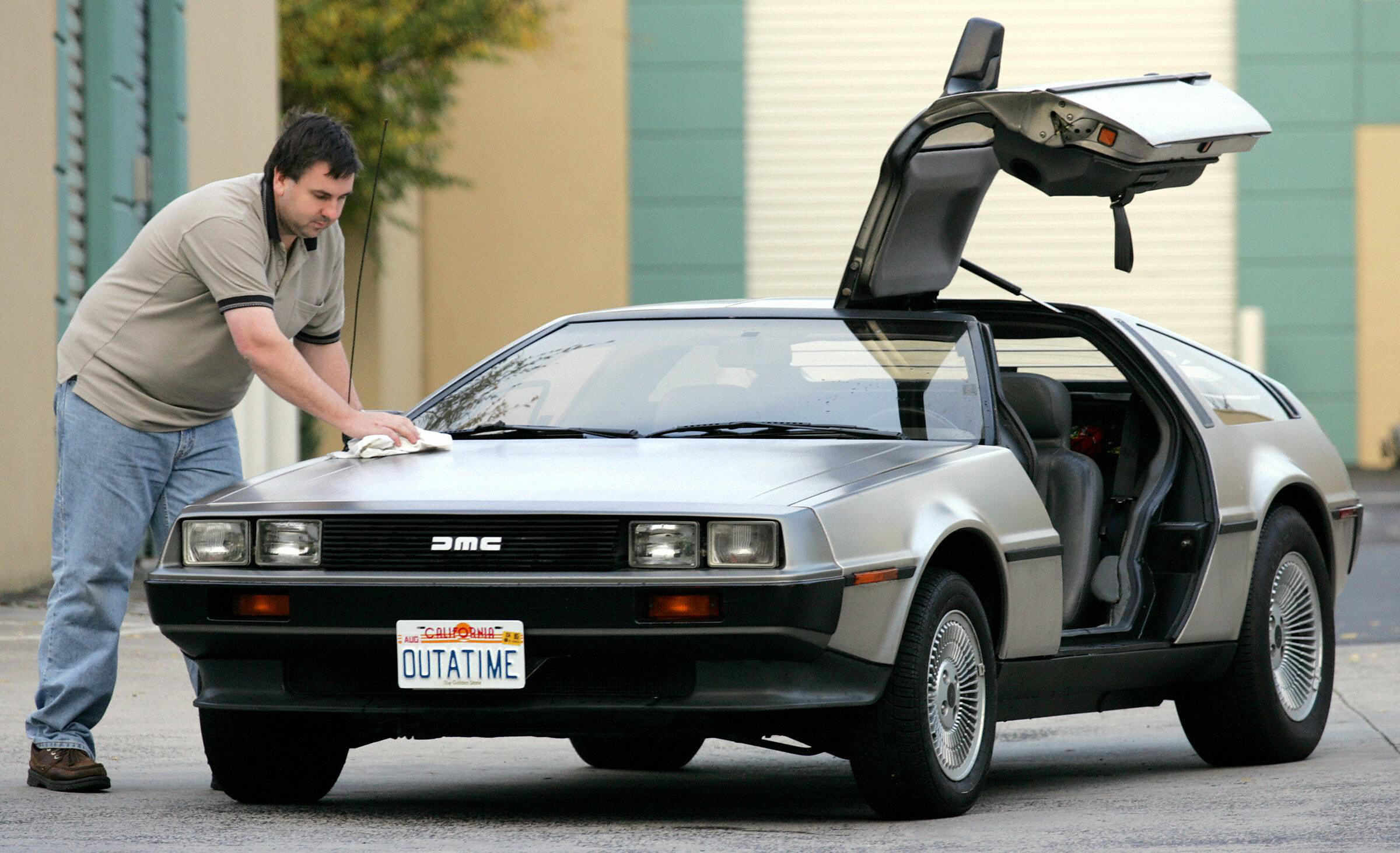
Automotive icon, snappy dresser and FBI target John Z. De Lorean left the building in 2005, leaving behind 8,582 stainless-steel DeLoreans and one time-traveling hotrod. Few car projects were more maledicted than the DMC-12. By the time Johnny Z. got the factory in Northern Ireland up and running — and what could possibly go wrong there? — the losses were piling up fast. The car was heavy, underpowered (the 2.8-liter Peugeot V6 never had a chance) and overpriced. And De Lorean was having a few dramas of his own, resulting in one of law enforcement’s more memorable hidden-camera tableaux: the former GM executive sitting in a hotel room with suitcases on money, discussing the supply-and-demand of nose candy. The Giugiaro-designed DMC-12 sure was cool looking, though. In August of this year, the Texas company that controls the rights to the name announced it will build a small number of new DMC-12’s. How’s that for time travel?
Cadillac Cimarron (1982)
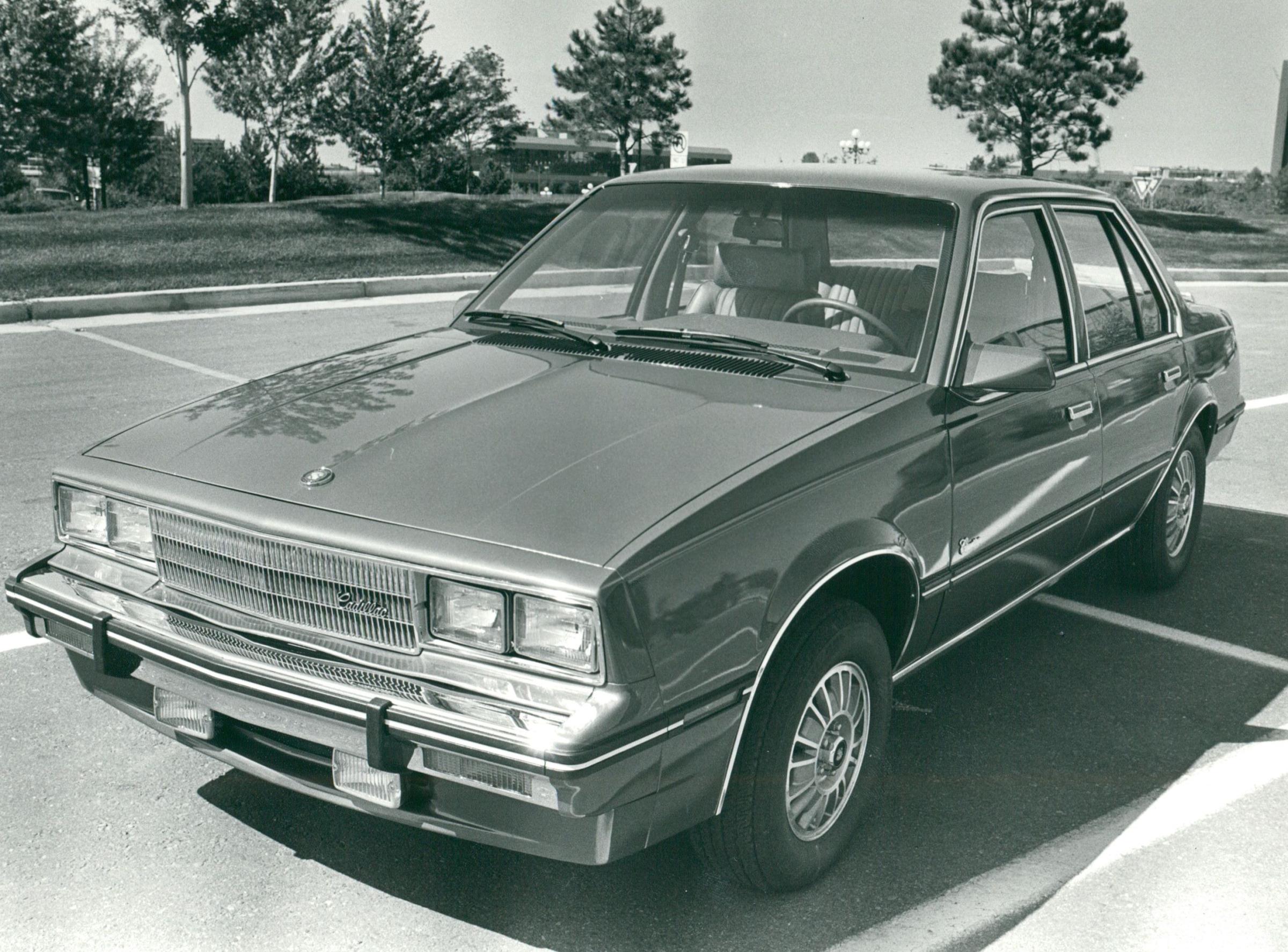
The horror. The horror. Everything that was wrong, venal, lazy and mendacious about GM in the 1980s was crystallized in this flagrant insult to the good name and fine customers of Cadillac. Spooked by the success of premium small cars from Mercedes-Benz, GM elected to rebadge its awful mass-market J-platform sedans, load them up with chintzy fabrics and accessories and call them “Cimarron, by Cadillac.” Wha…? Who? Seeking an even hotter circle of hell, GM priced these pseudo-caddies (with four-speed manual transmissions, no less) thousands more than their Chevy Cavalier siblings. This bit of temporizing nearly killed Cadillac and remains its biggest shame.
Camaro Iron Duke (1982)
There was a time when 90 horsepower was a lot, and that time was 1932. Fifty years later, it was bupkis, especially under the hood of Chevy’s beloved Mustang-fighter, the Camaro. As the base engine for the redesigned 1982 Camaro (and Pontiac Firebird), the 2.5-liter, four-cylinder “Iron Duke” was the smallest, least powerful, most un-Camaro-like engine that could be and, like the California Corvette, it was connected to a low-tech three-speed slushbox. So equipped, the Iron Duke Camaro had 0-60 mph acceleration of around 20 seconds, which left Camaro owners to drum their fingers while school buses rocketed past in a blur of yellow.
Maserati Biturbo (1984)
“Biturbo” is, of course, Italian for “expensive junk.” At least, it is now, after Maserati tried to pass off this bitter heartbreak-on-wheels as a proper grand touring sedan. The Biturbo was the product of a desperate, under-funded company circling the drain of bankruptcy, and it shows. Everything that could leak, burn, snap or rupture did so with the regularity of the Anvil Chorus. The collected service advisories would look like the Gutenberg Bible. The only greater ignominy was the early 1990s Maserati TC, a version of the Chrysler Le Baron (a flaccid, front-drive, four-cylinder loser-mobile) with the proud Mazzer Trident on the nose. Finally, sir, have you no shame?
Mosler Consulier GTP (1985)
Warren Mosler, a brilliant economist and investor, built his sports racer out of bits and parts that fell off the Big Three’s table — a steering wheel from a minivan here, a Chrysler engine there, some mismatched gauges — but mostly what he did was to add lightness. The resulting fiberglass-bodied car had a marvelous power-to-weight ratio and did so well in racing that it was eventually banned. Or it might have been that the course workers were suffering from post-traumatic stress from the sight of the thing. Mosler had thought of everything but a stylist, and the pride and joy of this arch-capitalist looked like something from an East German kit-car company. Truly one of the ugliest cars ever, the Consulier GTP proved once and for all that building a car is harder than it looks.
Yugo GV (1985)
Malcolm Bricklin, he of the Bricklin SV1, wouldn’t be satisfied until he had forced every American to walk to work. To that end, in 1985, he began importing the Yugo GV, which turned out to be the Mona Lisa of bad cars. Built in Soviet-bloc Yugoslavia, the Yugo had the distinct feeling of something assembled at gunpoint. Interestingly, in a car where “carpet” was listed as a standard feature, the Yugo had a rear-window defroster — reportedly to keep your hands warm while you pushed it. The engines went ka-blooey, the electrical system — such as it was — would sizzle, and things would just fall off. Yugo. Or not.
Lamborghini LM002 (1986)
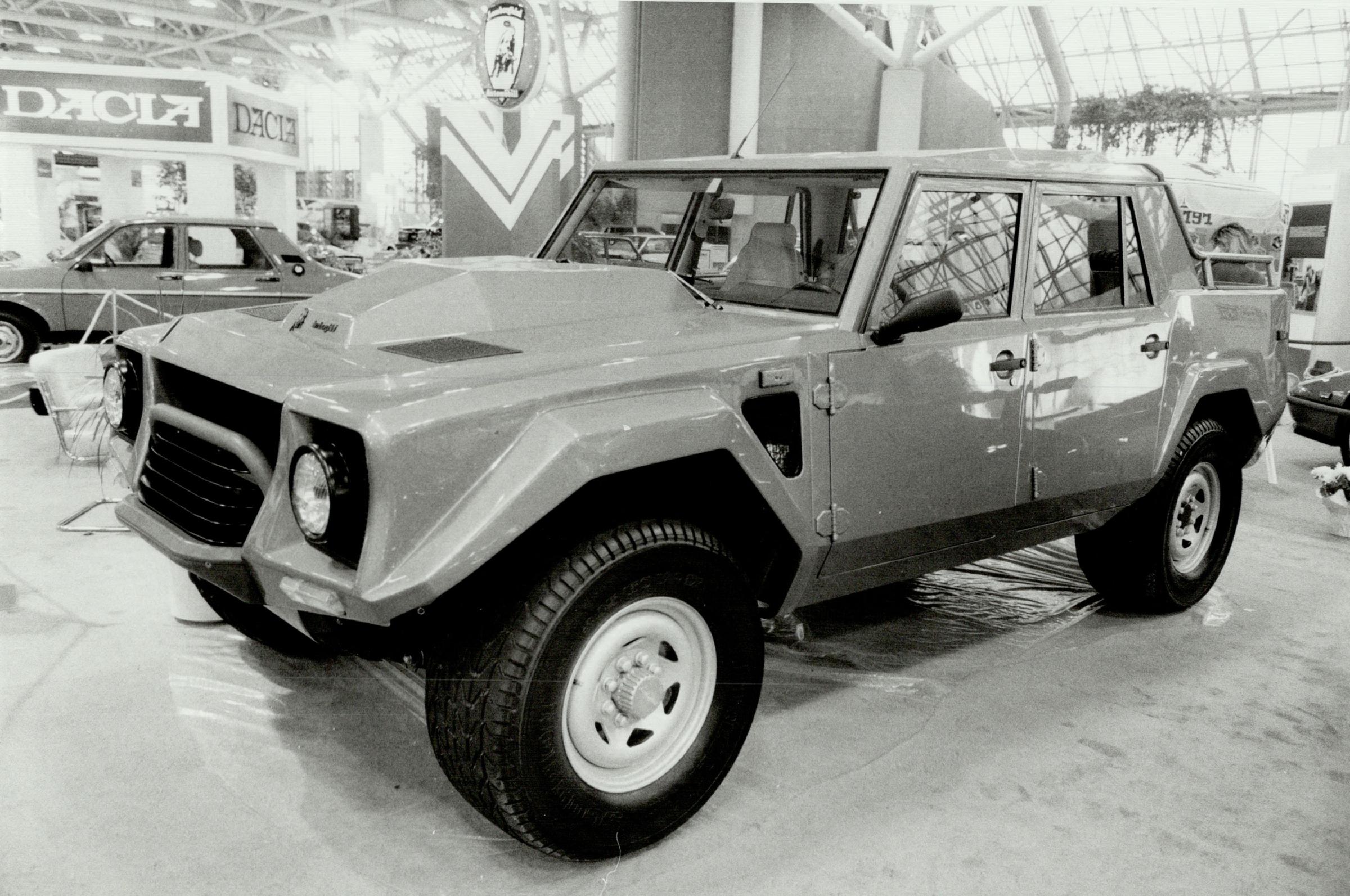
This V12-powered super dune buggy gets on the list — well, my list anyway — purely because of its appalling clientele. The “Rambo Lambo” was the civilian version of a military vehicle that Lamborghini sold to those beacons of democracy, Saudi Arabia and Libya, among others. The luxurious LM002 appealed to spoiled young Saudi sheiks wanting to cross the sand to survey their oil field holdings. Uday Hussein, son of Saddam, had one, which the U.S. military cheerfully blew up in 2004 during a “test” to simulate the effects of a car bomb. The LM002 is the forerunner of another large and unnecessary SUV that signals pure contempt for one’s fellow man, the Hummer H2. Read on.
Ford Explorer (1995)
How could the best-selling passenger vehicle in America 14 years running, the mother of all mom-mobiles, the beloved suburban schlepper of millions, wind up on this list? Forget about the whole Firestone tire controversy. In its very success, the Ford Explorer is responsible for setting this country on the spiral of vehicular obesity that we are still contending with today. People, particularly women drivers, discovered that they liked sitting up high. Even though more fuel-efficient minivans do the kid- and cargo-hauling duties better, people came to prefer the outdoorsy, go-anywhere image of SUVs. In other words, people became addicted to the pose. And, as vehicles got bigger and heavier, buyers sought out even bigger vehicles to make themselves feel safe. Helloooo Hummer. All of that we can lay at the overachieving feet of the Explorer.
GM EV1 (1997)
The EV1 was a marvel of engineering, absolutely the best electric vehicle anyone had ever seen. Built by GM to comply with California’s zero-emissions-vehicle mandate, the EV1 was quick, fun, and reliable. It held out the promise that soon electric cars — charged from the grid with all sorts of groovy power sources, like wind and solar — could replace the smelly old internal-combustion vehicle. And therein lies the problem: the promise. In fact, battery technology at the time was nowhere near ready to replace the piston-powered engine. The early car’s lead-acid bats, and even the later nickel-metal hydride batteries, couldn’t supply the range or durability required by the mass market. The car itself was a tiny, super-light two-seater, not exactly what American consumers were looking for. And the EV1 was horrifically expensive to build, which was why GM’s execs terminated the program — handing detractors yet another stick to beat them with. GM, the company that had done more to advance EV technology than any other, became the company that “killed the electric car.”
Plymouth Prowler (1997)
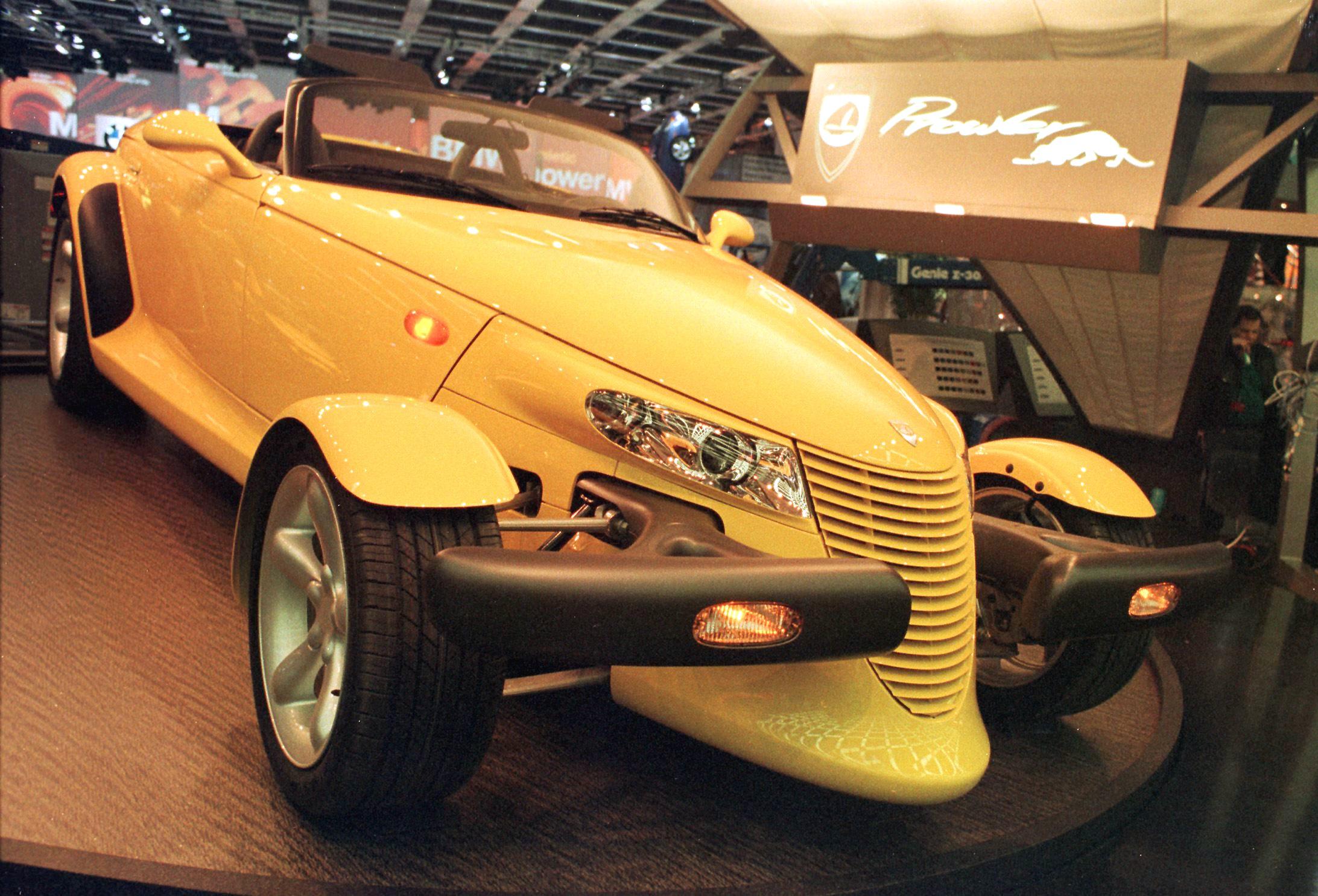
By the mid-1990s, car designers had powerful new computer tools at their disposal, allowing them to pursue low-volume, high-zoot projects that before would never have recovered the development costs. The Prowler was one such project. Inspired, if not plagiarized, by a retro-roadster design by Chip Foose, the Prowler looked like a dry-lake speedster from the 22nd century, with an open-wheel front end and low-slung hotrod fuselage. Except they forgot to make it a hotrod. Intent on containing costs, Chrysler stuck its standard-issue 3.5-liter V6 under the hood, good for a rather less than spectacular 250 hp. The Prowler didn’t even have a manual transmission, which made it almost impossible to lay down the requisite stripes of hot rubber. The result was a flaccid little jerk of a car that threatened much but delivered little.
Fiat Multipla (1998)
“Multipla” is a time-honored name for Fiat. The company made an adorable microvan by that name in the ’50s and ’60s, based on the Fiat 600. The Multipla that appeared in 1998 was anything but adorable. With its strange high-beam lenses situated at the bottom of the A-pillars (base of the windshield), the Multipla looked like it had several sets of eyes, like an irradiated tadpole. It had this weird proboscis out front and a bulky, glass cabin in back, and the whole thing was situated on dwarfish wheels. I rented one of these in Europe and it worked beautifully, but it was just so tragic to look at. The Multipla (and the Aztek and the Consulier GTP) reminds us that cars cannot just work beautifully. They have to be beautiful. At least they can’t look like this.
Ford Excursion (2000)
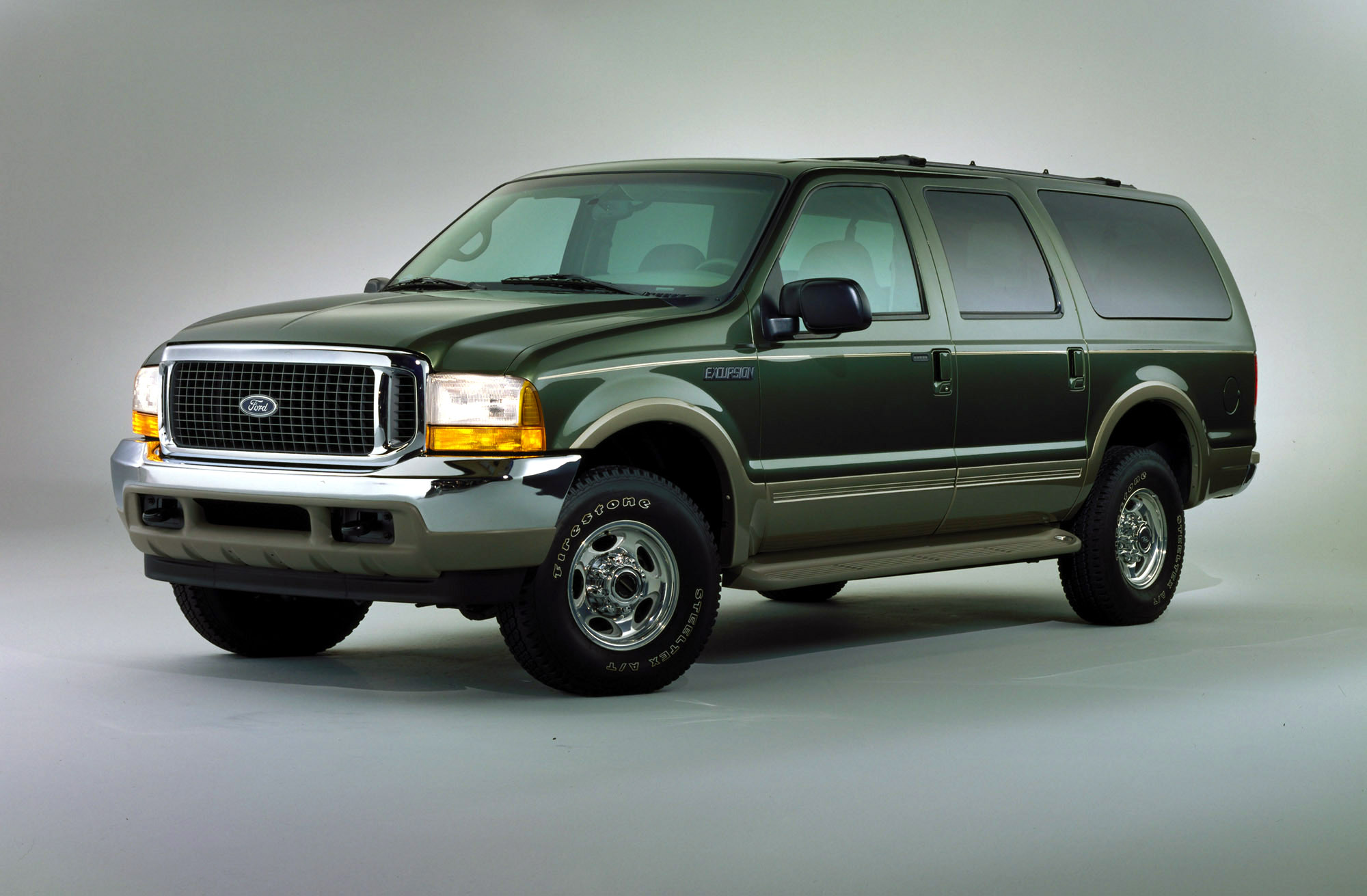
GM had its H2. Ford had the Excursion, a Mount Rushmore-sized SUV based on the company’s Super Duty truck platform. Dubbed the Ford “Valdez” by the Sierra Club, the Excursion was a passenger vehicle of gob-smacking proportions. It weighed 7,000 lbs, measured almost 19 ft. long and stood 6.5 ft. tall. At the time, Ford argued that many of its customers — ranchers, farmers, um, tugboat enthusiasts — needed a vehicle this big with over 10,000-lb. towing capacity. Maybe that was true, but that didn’t keep Suzy Homemakers from driving them to the mall. To its dubious credit, the Excursion pioneered the use of the blocker bar, a kind of under-vehicle roll bar designed to keep the Excursion from rolling over anything unfortunate enough to be hit by it. The Simpsons wrote the Excursion’s cultural obituary in the episode where Marge buys the “Canyonero.” “Can you name the truck with four wheel drive, smells like a steak and seats thirty-five…Canyoner-oooo!”
Jaguar X-Type (2001)
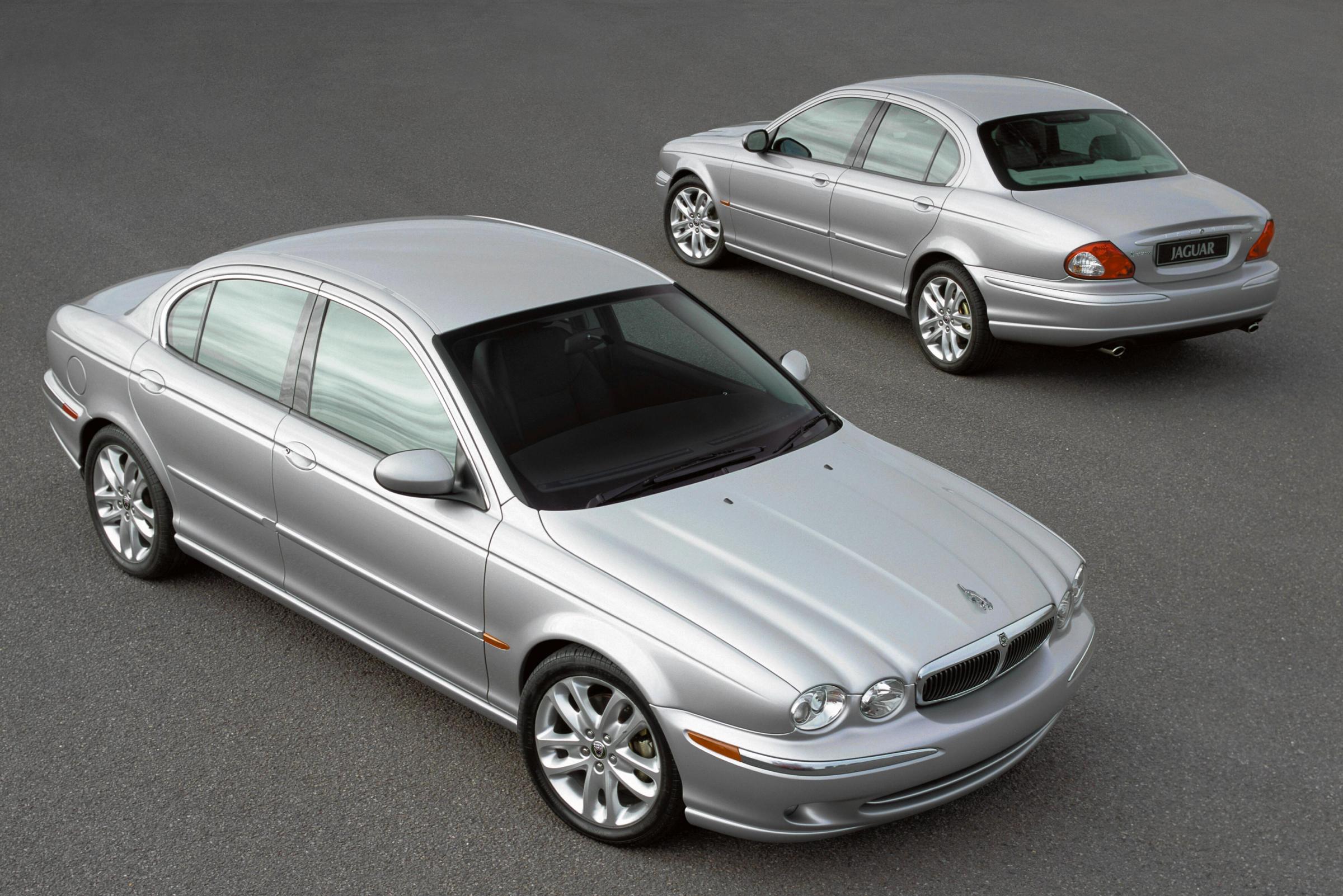
A business case is not the same as wisdom. Certainly, Jaguar needed an entry-luxury model to compete against the BMW 3-series and Mercedes-Benz C-class. Yes, the company, owned by Ford, had access to a very successful world car platform, the Mondeo, which Americans knew as the Ford Contour. There was money to be saved. But in its attempt to turn the front-drive compact car into an “all-wheel drive” sports sedan, Jaguar ran smack into the limits of platform engineering. The result was the English version of the Cadillac Cimarron, a tarted-up insult to a once-proud marque and a financial disaster for the company. It hardly matters that the X-Type was not that bad a car. Young affluent buyers had the feeling they were somehow being grifted. They were.
Pontiac Aztek (2001)

I was in the audience at the Detroit auto show the day GM unveiled the Pontiac Aztek and I will never forget the gasp that audience made. Holy hell! This car could not have been more instantly hated if it had a Swastika tattoo on its forehead. In later interviews with GM designers — who, for decency’s sake, will remain unnamed — it emerged that the Aztek design had been fiddled with, fussed over, cost-shaved and otherwise compromised until the tough, cool-looking concept had been reduced to a bulky, plastic-clad mess. A classic case of losing the plot. The Aztek violates one of the principal rules of car design: We like cars that look like us. With its multiple eyes and supernumerary nostrils, the Aztek looks deformed and scary, something that dogs bark at and cathedrals employ to ring bells (cf., Fiat Multipla). The shame is, under all that ugliness, there was a useful, competent crossover.
BMW 7-series (2002)
The Munich company’s flagship sedan was nothing less than everything the company knew about car building, and that was quite a lot. Perfectly constructed, astonishingly fast and utterly besotted with technology, the big, gracious 7-series had but two flaws: The first was something called iDrive, a rotary dial/joystick controller situated on the center console, through which drivers adjusted dozens of vehicle settings, from climate, navigation and audio functions to things like the sound of the door chime. The reason for iDrive and similar systems is that designers were running out of room for switches and instruments. The trouble was that the iDrive was hard to work. Damn near impossible, in fact. Drivers spent many hair-pulling minutes driving to figure out how to add radio presets, for example, or turn up the air conditioning. When confronted with complaints, BMW engineers said, with barely disguised contempt: Ze system werks pervectly. Dis is no problem. Since 2002, BMW has gradually improved iDrive to make it more intuitive, but it’s still a pain. The other flaw? The silly bubble butt, called the Bangle Bustle, after lead designer Chris Bangle.
Hummer H2 (2003)
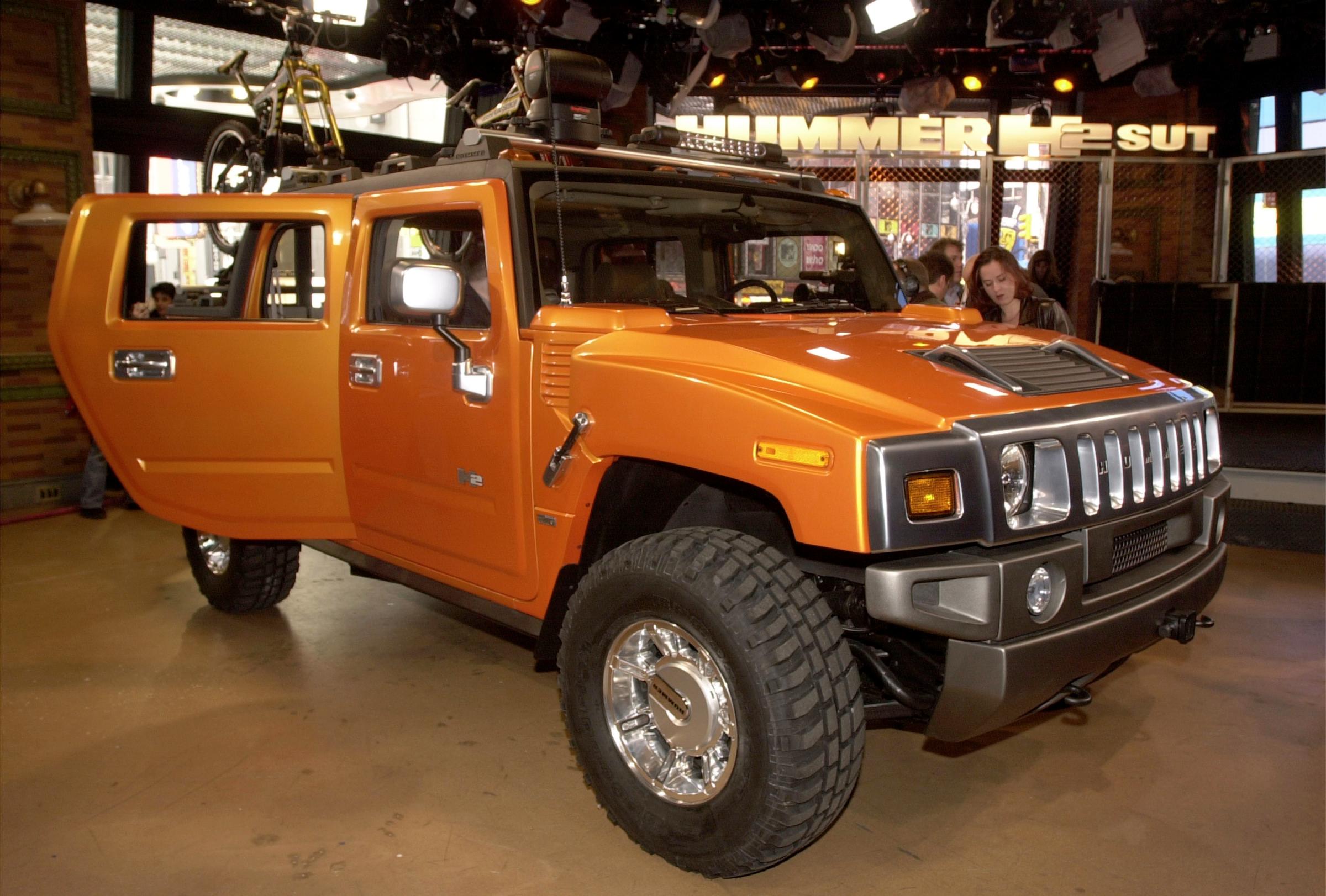
One struggles to think of a worse vehicle at a worse time. Introduced shortly after 9/11 — an event whose causes were tangled in America’s unquenchable thirst for oil — the Hummer H2 sent all the wrong signals. It was/is arrogantly huge, overtly militaristic, openly scornful of the common good. As a vehicle choice, the H2 was a spiteful reactionary riposte to notions that, you know, maybe we all shouldn’t be driving tanks that get 10 miles per gallon. Not surprisingly, the green-niks struck back. A Hummer dealership was torched in Southern California. The H2 was also a PR catastrophe for GM, who happened to be repossessing and crushing the few EV1 electric cars at the time. It all contributed to GM’s emerging image as the Dick Cheney of car companies.
Chevy SSR (2004)
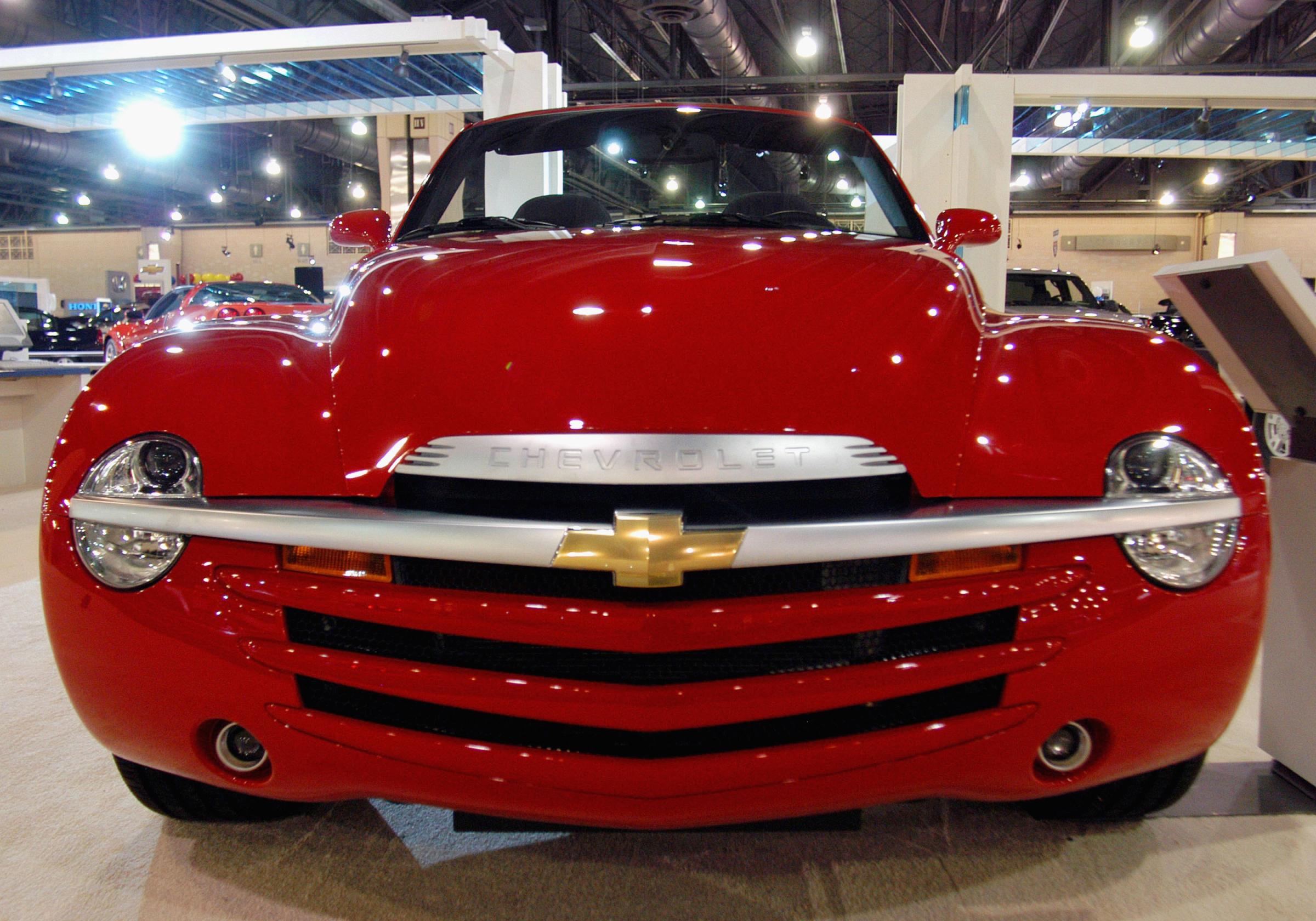
It’s surprising, considering that Chrysler and GM are in the same town, that GM didn’t learn from the Plymouth Prowler episode. When GM decided to kick up some custom retro mojo, it commissioned the Chevy SSR, an awesome-looking hotrod pickup truck with composite body panels and a slick convertible top. Alas, the chassis and mechanicals for the SSR were borrowed from GM’s corporate midsize SUV program, making the putative performance machine heavy, underpowered and unforgivably lazy. It was no more hotrod than Britney is the next Helen Mirren. In the next couple of years, Chevy amped up the SSR but by then the credibility was gone. The SSR also violated a principle of hotrodding. Hotrods are homemade subversions of the existing order, mechanical folk art. There is no such thing as a factory hotrod. Seems obvious, in retrospect.
More Must-Reads from TIME
- Cybersecurity Experts Are Sounding the Alarm on DOGE
- Meet the 2025 Women of the Year
- The Harsh Truth About Disability Inclusion
- Why Do More Young Adults Have Cancer?
- Colman Domingo Leads With Radical Love
- How to Get Better at Doing Things Alone
- Michelle Zauner Stares Down the Darkness
Contact us at letters@time.com